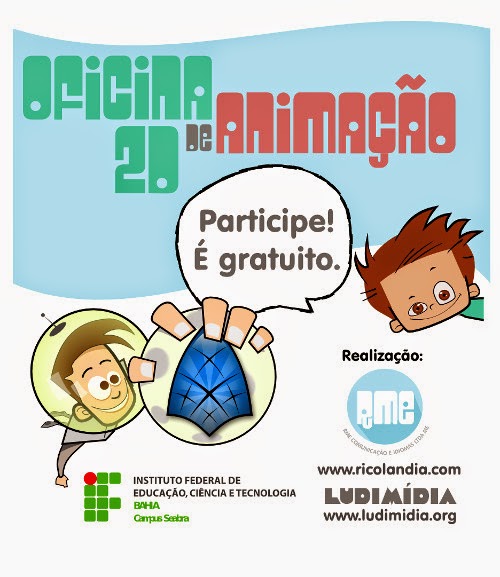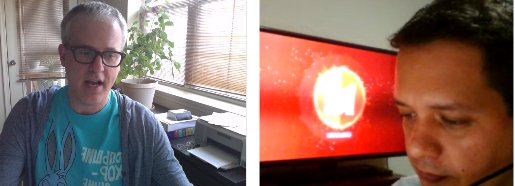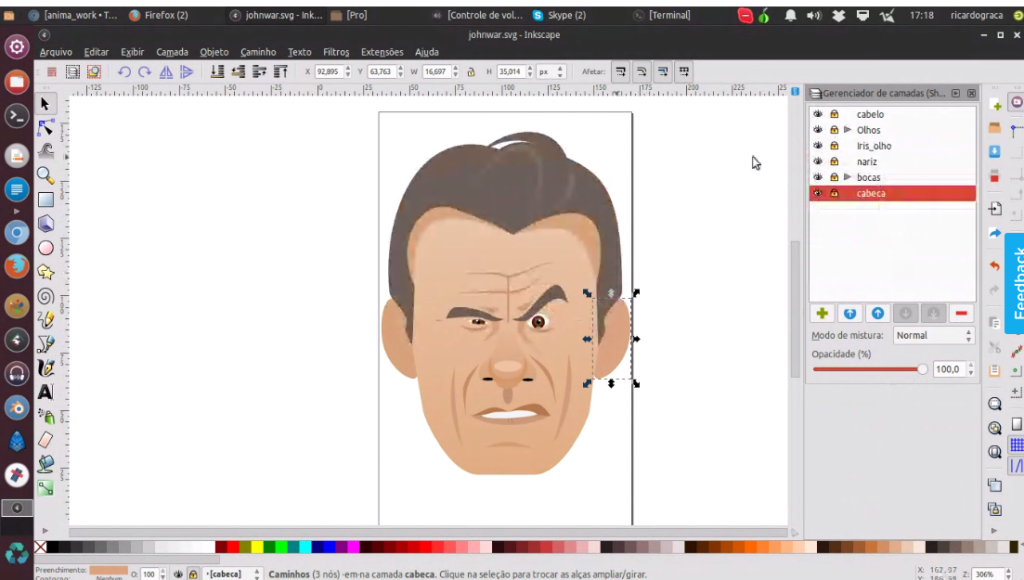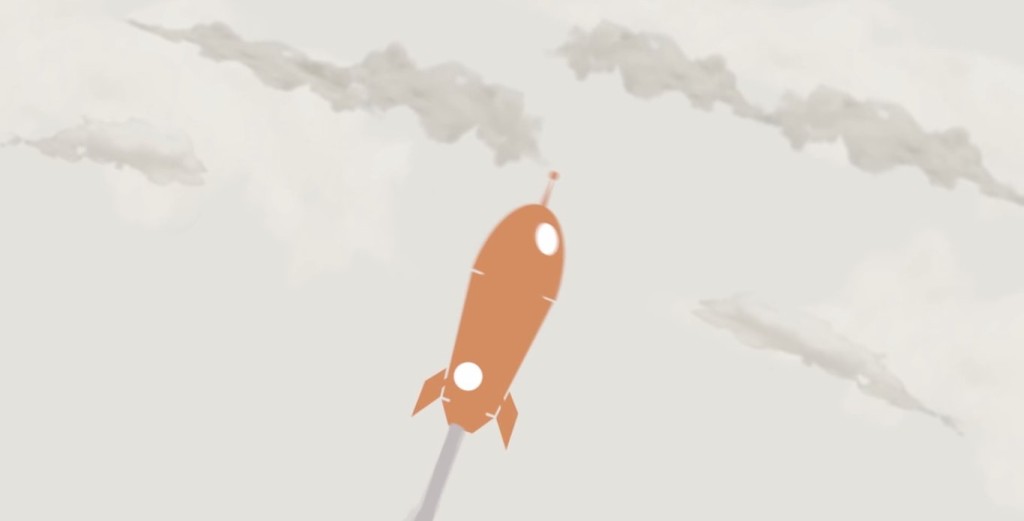A couple of weeks ago I saw an advertisement for an event on Google Plus. It was for an animation workshop using open-source software presented by Ricardo Graça. The only problem is that the workshop will be held in Rio. They will be capturing the upcoming event on video but the lecture will be in Portuguese.
I have been following Ricardo for years and really love his animation work. Of course I had to comment on his event post and let him know that I only wish I could book a ticket to Brazil and learn Portuguese before the event. As a more than gracious response, he said that he’d be happy to sit with me via video chat and go over his workflow. Of course I had to accept the invite. After years of watching his tutorials and work, I was finally going to be able to sit down and talk with him one-on-one.

Who is Ricardo?
For those of you who aren’t familiar with his work, Ricardo has been creating animations with open-source software for the past six years. He has tons of tutorials online that are super helpful. I first discovered his work when started learning Synfig years ago. Back then he partnered with some friends to create a series of tutorial videos under the name ” Quadro Chave.” The videos were great way to get over the intimidation of learning new software.
https://vimeo.com/10317762
His work is really spectacular. He incorporates almost all of the open source software options that are available to create some spectacular work. Currently, he’s been working on a sci-fi series that incorporates his multi-software approach.
Finding out more
Sitting down with someone and chatting really connects all the dots between the musings, videos and messages I’ve followed online over the years and the actual person. It was great to finally put a voice to the name. Friday was a hectic day at work but I was able to get home in time for our first meeting. Ricardo spared no time breaking the ice and talked about his background. It turns out that he majored in literature in college instead of art. The drive force for his work is telling stories. Animation turned out to be the necessity for those narratives. Writing is a major focus to his work and his process.

Open-source solution
Ricardo had 10 years of experience using graphic and animation software prior to transferring to open-source software. His switch came six years ago when he started his own studio, RME Communication and Languages. Ricardo will be the first to tell you that he’s not an open-source fanatic, but open source filled a need for him.
In the start-up costs of a company, not having to spend an astronomical amount of money on software and support made the decision to switch easy. Making the change over to open software had some growing pains but having support from the open-source community eased the transition. Now with three employees working with him, he’s glad he made the decision for having his studio work open source. From time-to-time Ricardo said he still gets some sideways glances or little comments when working with larger production companies on a project, asking him why he’s not using professional software. He pretty much answers back that he is.
Ricardo also teaches children language classes and gives back to his community by donating computers and training people, making them computer literate. Without using open source, he wouldn’t be able to load the computers up with useful software that will help individuals reach their true potential. It levels the playing field for everyone and creates opportunities.
Ricardo’s workflow
- All of Ricardo’s projects begin with proposal writing. Whether it’s to obtain government funding or explain the project’s scope to a client, Ricardo always starts every project by writing a proposal. Writing the initial intent for work not only helps with acquiring money, it also give you and your client a roadmap to follow for what to expect so that there are no surprises later in the process.
- Use project-management software. Once the proposal has been written and approved, Ricardo starts logging all meeting, hours, and milestones in project-management software. He uses Clockingit for keeping track of deadlines, client revisions and tasks. He especially likes the software so that he can audit the amount of time it took for to complete specific processes of the animation so that he can stay on budget.
- Get your ideas into script-writing software. Ricardo uses Celtx to help bring his ideas to life. He finds the software to really fit his needs for creating a script and getting his thoughts down with little effort.
- Skip the storyboards and jump right into animatics. Gimp is Ricardo’s primary tool for creating animatics. He quickly sketches out his script, fleshing out the action but not the details. He tries to limit the amount of time spent working on each image, drawings mostly gestural sketches suggesting characters or scenes. Once he gets completes all the images, Ricardo uses the plugin Gimp GAP to output his Gimp layers as frames that he can time out in video editing software. Ricardo finds creating storyboards unnecessary and focuses more on the timing of the animatic. Combining all the elements like visuals, sounds, dialogue, and music into a video editing program like KDENLive helps Ricardo see quickly if his script is working.
- Create characters/elements in Inkscape. Ricardo relies heavily on creating a lot of his animation assets in a free vector illustration program similar to Illustrator called Inkscape. He likes that he can create complicated characters with many facial expressions and poses. Inkscape allows him the ability to preserve all of his characters’ layers created in Inscape when opening up the same characters in Synfig, a 2D vector animation program. Inkscape has an export plug-in for Synfig that you can install to make the two programs talk to each other seamlessly. He can export his Inkscape files to Synfig while retaining all of the layer information.

Ricardo showing me how he sets up his character in layers in Inkscape so he can easily transfer it to other programs.
- Bring Inkscape elements into Synfig or Blender for compositing. Ricardo likes using Inkscape for drafting characters and scene elements. He can either export his drawings as png images to use in Blender or vector files that work with Synfig. Ricardo’s open to the solution which works best with his needs. He likes using bones and rigging characters in Blender but says that Synfig’s getting stronger in this area with recent developments. The control and sophistication of rigging a character in Blender—it’s fast and powerful.
Whatever software he works in composting the characters or scenes, Ricardo’s looking for the best results in the least amount of time. In his recent sci-fi animation, he showed me that all of the smoke and exhaust were actually painted frame-by-frame in Gimp. Ricardo said that he could have used some particle effects in Blender to accomplish the same effect but it would have taken hours to get the same desired result. He knew that painting them one at a time would get him exactly what he wanted in a fraction of time. Moving your animation elements between software and not feeling tied to one software for all processes is his solution for ensuring a superior product with an efficient use of time.

Next steps
Ricardo offered an interesting proposal at the end of our conversation. He asked if I would be interested in joining together with other artists and programmers to meet monthly online and work on projects together. The projects could take on many different aspects of open-source software—from promotional to educational materials. But the idea is getting everyone together and sharing ideas, work and efforts to get more people interested in open source, actively and publicly helping to improve our tools. Of course I’m flattered by the invite and will blog about what develops. It was an interesting conversation that I got tons of info from and I’m excited to see where our ongoing conversations lead.


I think it’s great! heheh…
Awesome post! I’m excited to hear more Stephen!